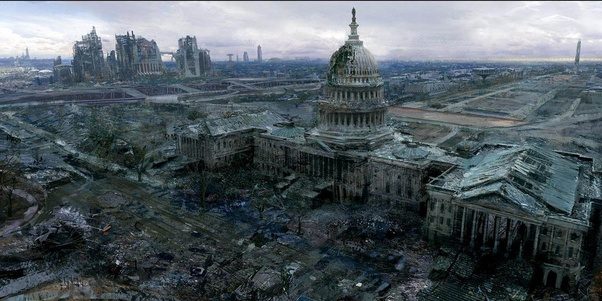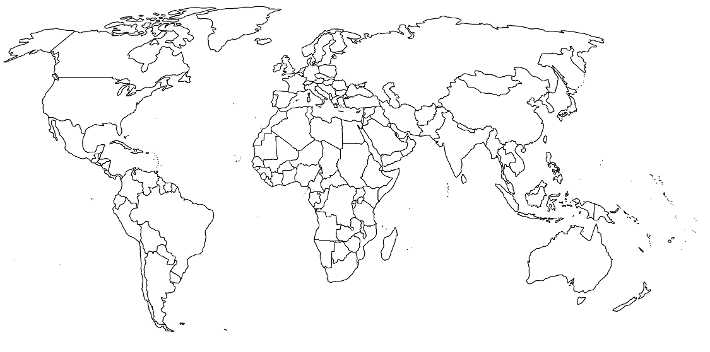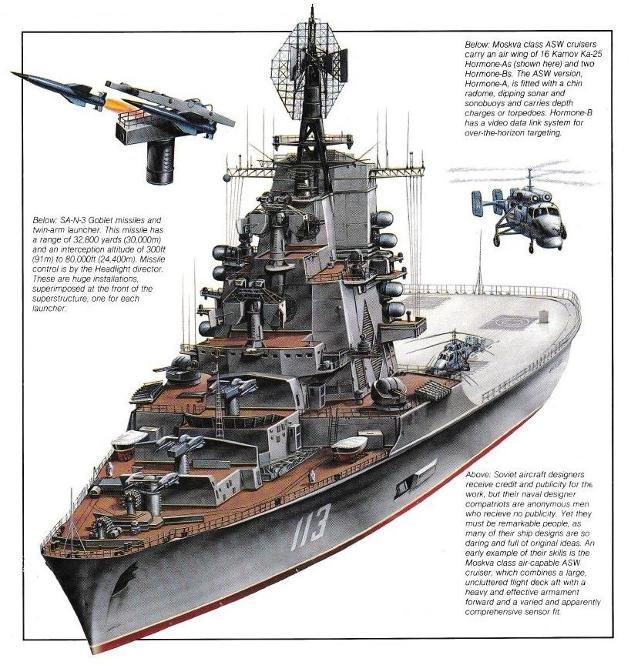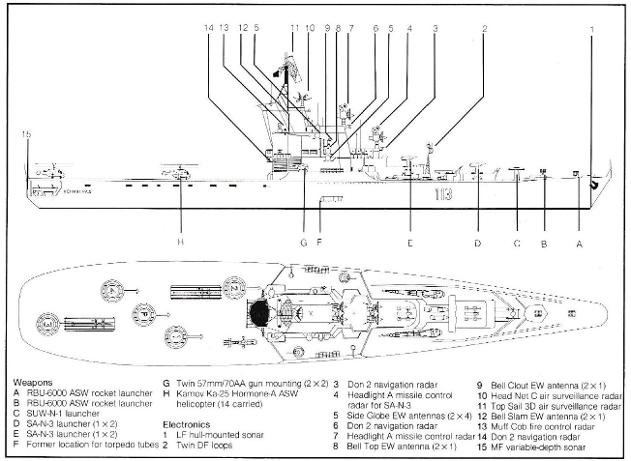
Nuclear targets in the United States
The Attack
The Russians launched a total of 600 ICBMs at the United States, China, Japan, Great Britain and France on June 26, 1988. Of these, 26 failed on launch, another 59 failed prior to orbit, and 82 failed upon reentry or during mid-course. Of the surviving missiles, 315 were SS-25 missiles carrying 3 x 1 MT warheads. These were aimed at 315 ICBM silos. Another 50 SS-24 missiles (with 10 warheads each) were aimed at 100 other ICBM silos (thus of the 450 US ICBM silos, 35 were saved by faulty Russian missiles). Most of these warheads did succeed in working as designed, and between them landed sufficiently close enough to knock out their targets. In addition, another 12 SS-13 missiles, with single 1 MT warheads, managed to hit close enough to Air Combat Command heavy bomber bases to destroy them. Another 56 ICBMs hit other targets (including 40 aimed at other countries).
USAF Bases
Barksdale AFB (Bossier City, LA) – B-52 wing, HQ 8th Air Force (2nd Bomb Wing)
Carswell AFB (Fort Worth, TX) – B-1B wing (7th Bomb Wing)
Dyess AFB (Abilene Texas) – B-1B wing (341st Bomb Wing)
Eaker AFB (Blytheville, ARK)- B-52 wing (97th Bomb Wing)
Ellsworth AFB (Rapid City, SD) Missile Wing HQ
Fairchild AFB (Spokane WA) B-52 Wing (92nd Bomb Wing)
Grand Forks AFB (Grand Forks ND) B-52 Wing (319th), Missile Wing HQ
Griffiss AFB (Griffis NY) B-1B Wing (416th Wing)
Whiteman AFB (Sedalia MO) B-2 Wing (509th)
Malmstrom AFB (Great Falls, MT) Missile Wing HQ
100 Minuteman III missile silos located spread around southern Montana
Warren AFB (Cheyenne WY) Missile Wing HQ, 20th Air Force HQ (ICBM HQ)
150 Minuteman III and 50 Peacekeeper missiles silos deployed over a 12,600-square mile area in three states: eastern Wyoming, western Nebraska and northern Colorado
Minot AFB (Minot, ND) Missile Wing HQ, B52 Wing (5th Bomb Wing)
150 Minuteman III missiles, located over an 8,500 square mile area in north central North Dakota
Each missile silo was targeted by 3 MIRV warheads. In most cases 1 hit, although in about 20% of the time, 2 hit in succession. All missile silos were hit by ground bursts. Strike Command managed to get 45% of the ICBMs launched before the strike hit, another 10% managed to get into the air as the strike hit and survived, while the remainder were destroyed in their silos or during launch. This was due to National Command Authority refusing launch on warning standard operating procedure for the ICBMs to reduce the threat of accidental launch in the weeks leading up to the strike. Decision making delays thus resulted in the destruction of roughly half of the US ICBM force.
Radiation was particularly severe to the windward of these locations, but luckily, a major weather system in the area brought it down quickly. Civilian casualties however were nearly total with 200 miles downwind of these target areas. The bomber bases were all hit by air bursts, which destroyed nearby communities, but fall out was relatively light. The areas downwind or in the immediate target areas of these strikes are essentially no longer populated. Fallout also spread over much of the US Midwest and Northeast. Considerable illness and some deaths resulted, but the longer term affects were to be more serious.
Air Combat Command had 250 B-52s, 75 B1Bs and 3 B-2s operational at the time of the attack. Of these, 25 B-52s and 8 B-1Bs were in the air (on nuclear alert), another 20 B-52s and 5 B-1Bs were undergoing extensive maintenance at bases other then their home base, another 20 B-52s and 12 B-1Bs were dispersed about the country, and 50 B-52s and 10 B-1Bs were on 15 minute alert. Nearly all of the alert aircraft, plus those dispersed and in the air thus survived the attack and carried out nuclear strike missions of their own. None of the aircraft undergoing maintenance survived the attack. In all, 135 B-52s, 40 B-1Bs and all 3 B-2s were destroyed on the ground. In addition, 225 Minuteman 3 missiles, and 25 Peacekeeper missiles were destroyed on the ground, but 175 Minuteman III and 25 Peacekeeper missiles were successfully launched.
Command and Control Strikes
Offut AFB (Bellevue Nebraska) Air Force Strike Command HQ (2 x 1 MT ground-bursts) Nearby Omaha suffered serious damage but most of the fallout went directly east, missing the city itself. Casualties to that fallout were heavy however in Iowa including the city of Des Moines.
Hickem AFB / Pearl Harbor (Oahu HI) Pacific Command HQ (3x 550 KT airbursts)
Pearl Harbor and Hickem AFB were totally destroyed, and Honolulu suffered serious damage. Civilian casualties were nearly half of the population of the state of Hawaii as the target area was densely populated. Aircraft dispersal reduced losses to only around 50 aircraft, while the Pacific Fleet was a much reduced force so losses were limited to 5 combat ships and 10 support ships. In addition, 3 x 550 KT warheads detonated about 4 miles south of the island of Oahu apparently due to a malfunction.
Cheyenne Mountain, Peterson AFB (Colorado Springs, CO) NORAD/Space Command
The mountain itself was the target and a direct hits from several 1 megaton warheads destroyed the facility. Local fallout made Colorado Springs uninhabitable for a considerable period of time. Another pair of warheads exploded in valley a few miles to the west, apparently due to a malfunction.
Pentagon, Arlington VA – HQ US Armed forces
A single 550 KT ground burst detonated in the middle of the Potomac River, destroying both the Pentagon and the White House, and most of Washington DC. The President was airborne at the time, but the Vice President was delayed and thus still in flight aboard his helicopter which was knocked down by the nuclear detonation resulting in all being aboard being killed. Another pair of warheads were apparently destroyed by this explosion and failed to go off. In addition, 3 more warheads apparently missed Washington DC, and landed a few miles north near Mount Vernon, Virginia. Fallout from all of these ground bursts resulted in heavy casualties in Baltimore, Annapolis and Wilmington, Delaware as well as all the communities around them.
Navy Targets
Kings Bay Naval base, GA (on Florida / Georgia state line)
Home port of 9 Trident armed Ohio class SSBNs. At the time of the attack, 3 were in port, and all 3 were destroyed.
Kitsap Naval base and Bremerton Naval Yard, WA (near Bremerton)
Home port of the remainder of the USN Ohio class SSBNs, at the time of the attack, 1 was in harbor, and another was at nearby Bremerton in drydock, as was the USS Kitty Hawk (CV) both targets were hit by airbursts in the 100 KT range, which demolished all 3 warships, several escort ships undergoing repair, and inflicted some damage to Seattle.
Space Launch Facilities
Kennedy Space Center / Patrick Air Force Base (Florida)
Vandenburg Air Force Base
Edwards Air Force Base
All three targets were destroyed by 3 x 550 KT airbursts, designed to destroy US space launch capability. This attack was mostly successful, however, missiles aimed at Los Alamos, and Area 51 both failed to successfully launch or complete their flights, and these facilities (which handled aircraft capable of launching small LEO recon and weather satellites) survived. The Edwards AFB attack also destroyed the production facilities for the B-2 Stealth Bomber. Fallout was limited and primarily local in all 3 attacks. It did destroy several ICBMs that had satellites instead of warheads loaded, wiping out that capability.
Other Damage
3 x 1 MT warheads detonated at 50,000 feet above the USA over Montana, Oklahoma and Ohio. These inflicted severe EMP damage to the US civilian economy, knocking out nearly 90% of civilian electronics. This damage, along with panic, radiation and the strain of the war completely brought down the US national economy. Oddly, the Soviet Union did not attack the United States with submarine launched missiles or air launched missiles from their few remaining bombers.
Nuclear strikes on the Soviet Union
Chinese Attack
The Chinese lost nearly their entire nuclear missile force capable of reaching Russia from a carefully planned cruise missile attack from Russian bombers that flew from Central Asia then over Tibet and hit them from the south. Only 2 Chinese ICBMs survived, but they were successfully launched and destroyed the city of Novosibirsk (1 MT airburst) and several square kilometers of relatively empty land near Omsk. Chinese theater weapons also managed to get a few hits, destroying the cities of Vladivostok, Chita, Irkutsk, Ulan Ude, the capital city of Mongolia (apparently out of spite) and nearly 30 Soviet airfields east of the Urals, essentially gutting the Soviet Air Force in the region.
US Attack
The United States managed to get 175 Minuteman III and 25 Peacekeeper missiles off the ground after the Soviet first strike on the US missile force. Of these, 20 Minuteman and 1 Peacekeeper failed during flight or orbit. Another 20 Minuteman and 2 Peacekeepers were destroyed (along with nearly everything in low earth orbit in the northern hemisphere) by the Soviet launch of 20 ABM missiles from their complex near Moscow. The EMP effects were the main culprits in wiping out most of the satellites orbiting the northern hemisphere.
The US targets were 1500 Soviet ICBM silos (now empty, but some silos were being hurriedly reloaded), and the White Sea, where 18 of the 22 remaining Soviet nuclear ballistic missile submarines were hiding in their bastions. Earlier in the war, the US Navy had managed to determined the general locations of each submarine (their operating areas) and devised a plan to essentially carpet bomb the entire area to ensure the destruction of those submarines. Over 100 Minuteman III missiles had so been targeted, and 35 of these survived, hitting the White Sea with a blanket of 105 nuclear detonations that sank, destroyed, or rendered severely damaged (so they couldn’t launch) every one of the Soviet missiles boats. It also killed everything in the White Sea with unknown long term ecological effects. The remaining 100 Minuteman IIIs and 22 Peacekeepers hit 520 missile silos (including those that were being reloaded).
The follow up US strike involved 95 B-52 bombers, which used air launched cruise missiles to destroy every major airfield and air defense missile site in the Soviet Union assigned to its Air Defense Force (PVO). Nearly 1,140 cruise missiles were used, each armed with 50 - 200 KT warheads, and this practically exterminated that Soviet military force.
The B-1Bs then went in, armed with Short Range Attack Missiles (SRAMs) with 100 KT warheads, and these 30 aircraft, armed with 40 SRAMs each, proceeded to roam at will destroying every single remaining Soviet missile silo as well as Soviet space launch facilities at Lenin-Tyuratam (Kazakhstan), Kapustin Yar (Kazakhstan), and Plesetsk (Russia). A flight of 5 B-1Bs attacked Moscow itself, and used SRAMs to destroy the air defenses (losing 2 aircraft in the process) and then leveling the entire city in retaliation for the destruction of Washington DC.
The remaining US B-52s and surviving US missile submarines did not take part in the attack. The Soviets were left with a few dozen bombers and 4 missile submarines of their own (all in the Black Sea). At that point, both sides agreed to a nuclear cease fire.
The British had 2 nuclear missile submarines that survived the attack on their forces, while the French had 1 nuclear missile submarine and 3 ICBMs that survived the attack on their country. They agreed to abide with the nuclear cease fire as well, as they were aware a further exchange would certainly mean the destruction of their major cities.
Other Damage
The destruction of Moscow, tactical strikes in the Ukraine and Belorussia, and theater and tactical strikes in Siberia brought about the collapse of civilian control over the Soviet Union for weeks. This in turn lead to revolt in Central Asia and the Ukraine and a de facto collapse of military operations against China (which had also collapsed). The civilian economy ceased to function from 1998 and 1999, and local authorities were forced to improvise; martial law was adequate to keep some order but most the skilled technocrats who ran the national economy died with Moscow.
In short, the United States was knocked out by the nuclear strikes while Russia continues to recover rapidly due to pre-planned stockpiles of goods and weapons, and deep-underground survival sites.


